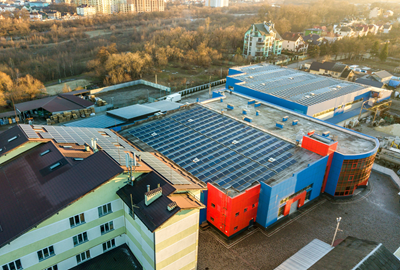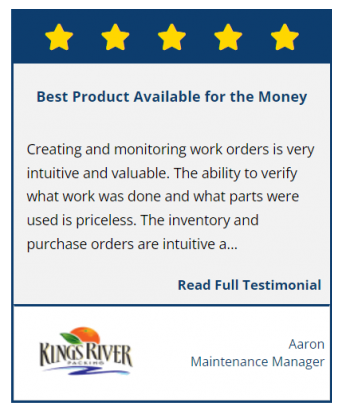 Maintaining the exterior of a building is essential to its longevity, safety, and functionality. Neglecting regular exterior maintenance can lead to significant damage, decreased efficiency, and costly repairs. An exterior building maintenance plan can help prevent these issues by outlining the tasks and frequency of maintenance for each component of the building’s exterior. In this article, we will discuss why an exterior building maintenance plan is crucial, and some successful tips you can include in your maintenance plan. Whether you own a warehouse, industrial facility, or commercial building, an exterior building maintenance plan is essential to protect your investment and ensure the long-term success of your business.
Maintaining the exterior of a building is essential to its longevity, safety, and functionality. Neglecting regular exterior maintenance can lead to significant damage, decreased efficiency, and costly repairs. An exterior building maintenance plan can help prevent these issues by outlining the tasks and frequency of maintenance for each component of the building’s exterior. In this article, we will discuss why an exterior building maintenance plan is crucial, and some successful tips you can include in your maintenance plan. Whether you own a warehouse, industrial facility, or commercial building, an exterior building maintenance plan is essential to protect your investment and ensure the long-term success of your business.
The Importance of Exterior Building Maintenance
 Protect Your Investment
Protect Your Investment
Your building is a significant investment, and neglecting its exterior maintenance can result in serious damage. The exterior of your building is exposed to the elements, including wind, rain, snow, and sun. Over time, these elements can cause damage to the roof, walls, and other exterior components. Regular maintenance can prevent this damage from occurring, protecting your investment and saving you money in the long run.
Maintain Curb Appeal
The exterior of your building is the first thing people see when they approach your property. If the exterior is dirty, damaged, or poorly maintained, it can create a negative impression. On the other hand, a well-maintained exterior can improve your property’s curb appeal, making it more attractive to potential tenants or customers.
Maintain A Safe Working Environment
A poorly maintained exterior can pose safety hazards to workers and visitors. For example, loose or damaged roofing materials can fall and injure someone. A maintenance plan can identify and address these safety issues before they cause harm, ensuring that your facility is a safe place to work.
Ensure Efficient Operations
The exterior of your warehouse or industrial facility plays a critical role in its operations. For example, the roof is essential for protecting your goods and equipment from the elements, and the walls provide a barrier between the interior and exterior. Regular maintenance can ensure that these components are functioning correctly, preventing issues that could disrupt your operations.
Compliance With Regulations
Many cities and municipalities have regulations and codes that require buildings to be maintained to certain standards. Failure to comply with these regulations can result in fines and legal issues. An exterior building maintenance plan can help ensure that your facility meets these standards, keeping you in compliance and avoiding costly penalties.
Key Steps for a Successful Exterior Maintenance Plan
Evaluate Your Building
The first step to creating a successful exterior building maintenance plan is to evaluate your building. Start by identifying the exterior components that require maintenance, such as the roof, walls, windows, doors, and landscaping. Assess the condition of each component, noting any visible damage or wear and tear.
You may also want to consider the climate and environmental conditions in your area. For example, if you live in an area prone to severe weather conditions, you may need to take extra measures to protect your building’s exterior.
Don’t Let Water Intrusion Go Unnoticed
Keep an eye out for leaks and train your employees to do the same. Water intrusion can escalate into more serious issues like mold and flooding. Allocate a budget for fixing these problems promptly.
Promptly Address Minor Exterior Issues to Prevent Major Problems
Address minor issues such as leaks, stucco cracks, and settlement cracks promptly to avoid bigger problems later. Even small exterior cracks can quickly become bigger ones, so seal or fix them right away.
Determine Maintenance Frequency
Once you’ve evaluated your building, determine the maintenance frequency for each component. Some components such as landscaping or exterior lighting, may require monthly or seasonal maintenance. Others, such as the roof or walls, may only require annual or bi-annual maintenance.
Determine the appropriate frequency for each component based on its condition, age, and exposure to the elements. Be sure to prioritize critical components, such as the roof, that require regular maintenance to prevent significant damage.
Be sure to include details such as the expected completion date, the responsible party, and any necessary materials or equipment. A clear and organized maintenance schedule can help ensure that each component receives the necessary attention and reduce the likelihood of overlooked maintenance tasks.
Allocate Resources
Implementing an exterior building maintenance plan requires resources, including time, money, and personnel. Determine the resources required for each maintenance task and allocate them accordingly.
Consider partnering with a professional maintenance team to help you execute your plan more efficiently and effectively. A professional team can provide expertise, experience, and equipment to ensure that maintenance tasks are completed correctly and promptly.
Monitor and Adjust
The final step in creating a successful exterior building maintenance plan is to monitor and adjust your plan regularly. Regular monitoring can help you identify any issues or maintenance needs that may have been overlooked.
Adjust your maintenance schedule and resources as necessary to ensure that your plan remains effective and efficient. Regular adjustments can help you maintain the exterior of your building and avoid significant damage or repairs in the future.
Prioritize Safety
Incorporate safety protocols and procedures into your exterior building maintenance plan to protect employees and visitors. Identify any potential hazards or risks associated with maintenance tasks and take the necessary precautions to prevent accidents or injuries. Be sure to provide appropriate safety equipment and training for employees involved in maintenance tasks.
Use Quality Materials and Equipment
Using high-quality materials and equipment can improve the effectiveness and longevity of your maintenance tasks. Invest in reliable equipment and durable materials that can withstand exposure to the elements and regular wear and tear. Using low-quality materials and equipment can lead to frequent repairs, higher maintenance costs, and decreased efficiency.
Consider Energy Efficiency
Incorporate energy-efficient measures into your exterior building maintenance plan to reduce energy costs and promote sustainability. For example, consider installing solar panels or energy-efficient lighting. Incorporating energy-efficient practices can also contribute to a positive public image and support your company’s sustainability goals.
Schedule Regular Inspections
Regular inspections can help identify any maintenance needs or issues before they escalate. Schedule regular inspections of your building’s exterior to assess its condition and identify any maintenance needs. Incorporate these findings into your maintenance plan to ensure that each component receives the necessary attention.
Outsource Maintenance Tasks to Experts
It’s best to hire experts for some tasks like climbing on the roof to inspect structural issues for safety and efficiency. Outsource maintenance and repair work to experienced professionals who know their trades to ensure your building is always up to code and minor issues are addressed before they become major problems.
Exterior Maintenance for a Professional Image
Maintain the appearance of your building to create a professional image and attract potential customers, recruits, and business partners. Consider investing in new windows, modern signage, a fresh coat of paint, and other exterior elements that will improve safety and enjoyment for occupants.
The Benefits of Using a CMMS for Exterior Building Maintenance
Computerized Maintenance Management Systems (CMMS) can significantly help in managing an exterior building maintenance plan. These software programs can track maintenance schedules, assign tasks to team members, and generate work orders automatically. CMMS can also monitor inventory levels, track maintenance costs, and generate reports that can help identify areas that require more attention.
Using a CMMS for an exterior building maintenance plan can improve communication and collaboration among team members, streamline the maintenance process, and ensure that all components of the exterior receive the necessary maintenance. With automated scheduling and work order generation, a CMMS can reduce administrative workloads and prevent missed maintenance tasks. Additionally, the ability to generate reports and track maintenance costs can help with budgeting and resource allocation for future maintenance needs.
Conclusion
Exterior building maintenance is crucial for preserving the value and safety of any property. Neglecting to maintain a building’s exterior can result in costly repairs and potential hazards for occupants and passersby. By following the tips for success outlined above, property owners can ensure their buildings remain in excellent condition, protecting their investment and creating a positive impression for all who encounter it. Consistent and thorough exterior building maintenance not only provides tangible benefits but also contributes to the overall aesthetic appeal of a property, making it a worthwhile investment for any property owner.